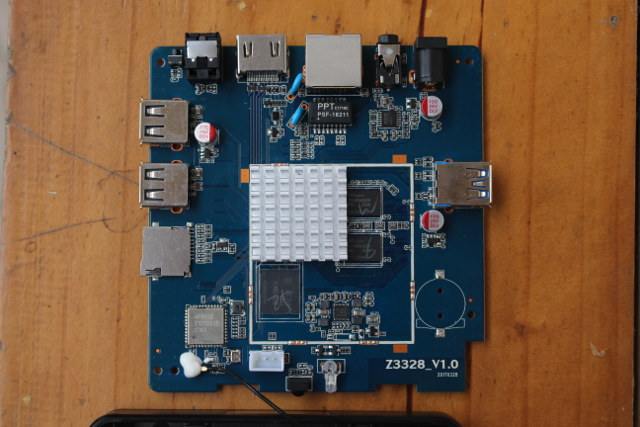Zidoo X7 is another Rockchip RK3328 based TV box that has the advantage of coming with 2GB RAM, 802.11ac WiFi and Bluetooth 4.1, as well as Zidoo firmware support, compared to its cheaper competitors such as A95X R2 TV box. The company sent me a review sample to check out it. As a side note, it was quite a challenge to get the box, as my country of residence enacted a new law requiring a “broadcasting license” to import TV boxes and HDMI dongles, even if you get just one unit, so the first attempt failed to got through customs, but eventually I managed to get the box through a local reseller. Back to the review… As usual I’ll write a first part showcasing the hardware design today, before testing the firmware, and publishing my results next month.
Zidoo X7 Unboxing
The package shows some of the key features of the box like 4K, 3D, H.265/HEVC video support, Android 7.0 OS, 2GB RAM, and so on.

The box ships with an infrared remote control with IR learning function for 4 keys, a HDMI cable, a 5V/2A power adapter – which hopefully will be enough to power my hard drive -, Zidoo X7 user guide, a guarantee card, and a “qualified certificate”.

The box itself comes with a small windows on the front panel for the power LED and IR receiver, two USB 2.0 port and micro SD slot on one side, a USB 3.0 port on the side, and the remaining of the ports on the rear panel: 5V DC jack, AV port (composite + stereo audio), Fast Ethernet port, HDMI 2.0a output, optical S/PDIF, and the recovery pinhole.

Zidoo X7 Teardown
I had to take out the four rubber pads, and loosen four screws to open the box.

There’s not much to see on the bottom side, except a metal shield soldered to the board.

The board can be easily taken out of the plastic case. We can see a fairly large heatsink on the processor that makes contact to a thermal pad glued on a thick thermal pad. So cooling appears to be better than on the cheaper models. The WiFi antenna is also glued to one of the side of the case.

On the top side of Z3328_V1.0 board, the processor is connected to two SKHynix H5TQ4G63CFR DDR3 SDRAM chip (2x 512MB) – with the two other chips likely placed under the metal shield -, and Samsung KLM8G1GEME-B041 eMMC 5.1 flash chip with 185/40 MB/s sequential R/W speeds, and 5.2K/2.5K R/W IOPS, which will be the best you’ll get from an 8GB Samsung flash chip, and should help to offer a smooth user experience.

Network connectivity is implemented with an Ampak AP6255 SDIO module with 802.11 b/g/b/ac WiFi and Bluetooth 4.1, as well as PPT PSF-162111 transformer for Fast Ethernet. Others ICs include Rockchip RK805-1 PMIC, and 3PEAK TPF632 audio line driver. There also appears to be a footprint for a CR2032 battery for an RTC, and the 3-pin header close to the IR receiver is likely for serial console access.
I’d like to thank Zidoo for arranging shipping for the review sample. Zidoo X7 can be purchased on several sites for $65 and up, including GearBest, GeekBuying, Amazon US, and Aliexpress.
Continue reading Zidoo X7 Review – Part 2: Android 7.1 Firmware, ZDMC, WiFi, and More

Jean-Luc started CNX Software in 2010 as a part-time endeavor, before quitting his job as a software engineering manager, and starting to write daily news, and reviews full time later in 2011.
Support CNX Software! Donate via cryptocurrencies, become a Patron on Patreon, or purchase goods on Amazon or Aliexpress




